Lighting Myths Debunked: Avoid These Common Design Misconceptions October 18, 2025 – Posted in: Lighting Information
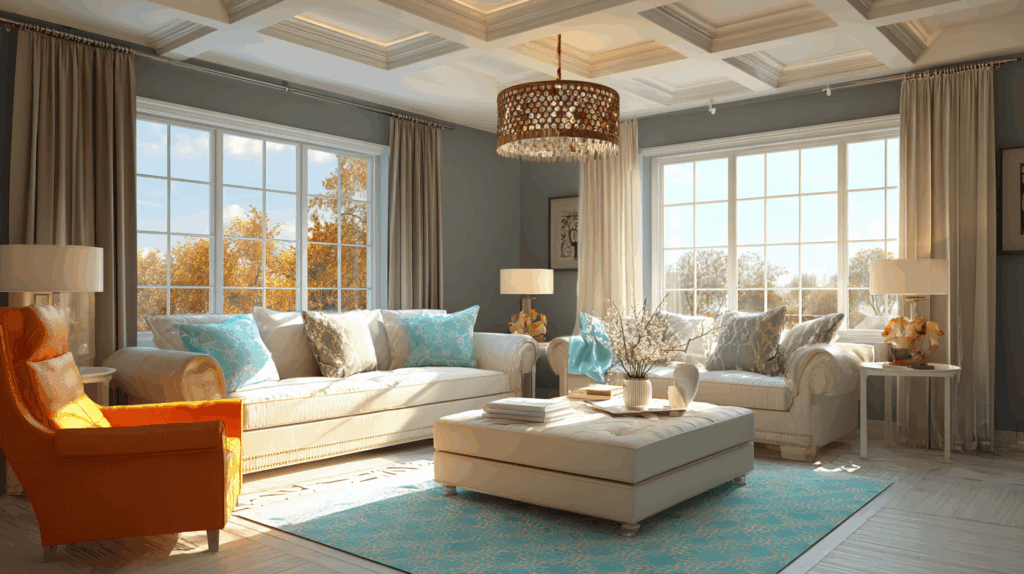
Table of Contents
Common Lighting Design Myths: Busted
Many of us struggle to find the right lighting for our homes or offices. It can be confusing because there are so many Lighting Design Myths out there. You are not alone in this; many people face the same issues every day.
Studies show that good lighting design can change how we feel, help us stay comfortable, and even lower energy bills. In this blog post, we will clear up common myths about lighting systems with simple facts and real solutions.
Keep reading to find out which misconceptions might be stopping you from making better lighting choices.
Practical Tip: Evaluate the desired lighting for each space by matching specific lux levels to task needs. For example, a home office may use a mix of ambient and task lighting to boost productivity and comfort.
Key Takeaways
- Brighter lights do not always mean better lighting. Too much brightness can cause glare and discomfort. Quality matters more, such as using high Color Rendering Index (CRI) bulbs for true colors.
- Not all LED lights are the same. High-quality LEDs have CRI scores above 80 and can last up to 50,000 hours, while cheap ones may fade or distort colors.
- Using only one type of light source leads to flat and dull rooms. Mixing ambient, task, and accent lighting makes spaces feel better and saves energy.
- Relying only on natural light is not best for every space. Sunlight changes during the day, so it is important to balance daylight with smart artificial lighting like LEDs for steady comfort.
- Good lighting design uses a mix of placement, color temperature choices (like warm white at 2700K or cool white above 5000K), dimmers, controls, and efficient fixtures to improve mood while lowering bills.
For professional lighting design, consider both energy consumption and mood. It is essential to integrate lighting that meets task requirements while enhancing overall aesthetics.
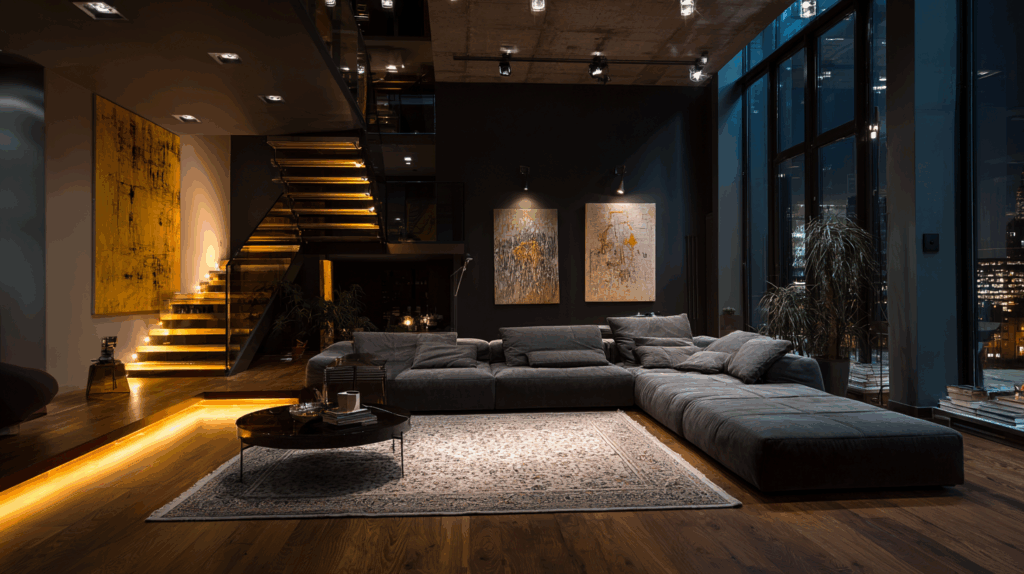
Why lighting myths matter
Lighting myths can easily mislead our choices about energy efficiency and comfort. Most people do not see lighting as the backbone of a room, but it shapes mood, safety, and how we use spaces.
False ideas about led technologies or types of fixtures may raise costs and even cause headaches or eye strain. A bright bulb is not always better if it leads to fatigue or glare.
Myths around leds, natural light, and color temperature also affect our perception of what works in homes or offices. Relying on old myths increases energy consumption and can harm both aesthetics and the environment; for example, using only incandescent bulbs increases electric bills while adding greenhouse gas emissions.
Lighting designers know that smart placement improves both style and user experience in every space.
“Good lighting transforms architecture from ordinary to extraordinary.”
Let’s start with one common misconception: Brighter always means better lighting.
Myth: Brighter = Better

Many people think the best lighting means using the brightest light bulbs. This common misconception can ruin both comfort and function in a space. Our experience as architectural lighting designers has taught us that more brightness does not guarantee better visibility.
Spaces like kitchens or offices need specific lux levels, such as 300 lux for reading and over 500 for detailed work at a desk. Too much bright light often leads to glare, instead of making things clearer, it actually makes them harder to see over time.
Having quality light is much more important than just having strong intensity. We always focus on high Color Rendering Index (CRI) scores, which help show colors accurately and make rooms feel natural.
Warm white bulbs create cozy moods in bedrooms while cooler white suits workspaces by boosting alertness and productivity. A good lighting solution mixes fixtures such as ceiling lamps, task lights, sconces, dimmers, and even pendants to match each activity or area’s needs.
Mixing ambient lighting with accent types helps balance brightness with comfort; this supports lower electric energy consumption too while improving overall mood in any home or office setting.
Example: In a kitchen, using a combination of ambient and task lighting can achieve about 300 lux for general activities and 500 lux for cooking tasks without causing glare.
Quality over intensity

Quality matters more than just how bright a light is. Light intensity, measured in lux, helps us do tasks, but spreading it well makes a bigger difference. For reading, we need about 300 lux; for sewing or intricate work, at least 500 lux works best.
Too much brightness causes glare and discomfort; it doesn’t help us see better.
We check the Color Rendering Index or CRI to see how true colors look under each light source. Daylight scores 100 CRI while most LED lighting rates between 75 and 85. Warm white bulbs set a cozy mood around 2700K color temperature; cool white bulbs over 5000K feel sharp and bright.
We match lumens to our needs so every space gets the right amount of illumination without wasting electricity or harming our eyes with harsh white light from cheap fixtures.
Next up, let’s debunk myths about all LEDs being equal in color and performance.
Myth: All LEDs Are Equal
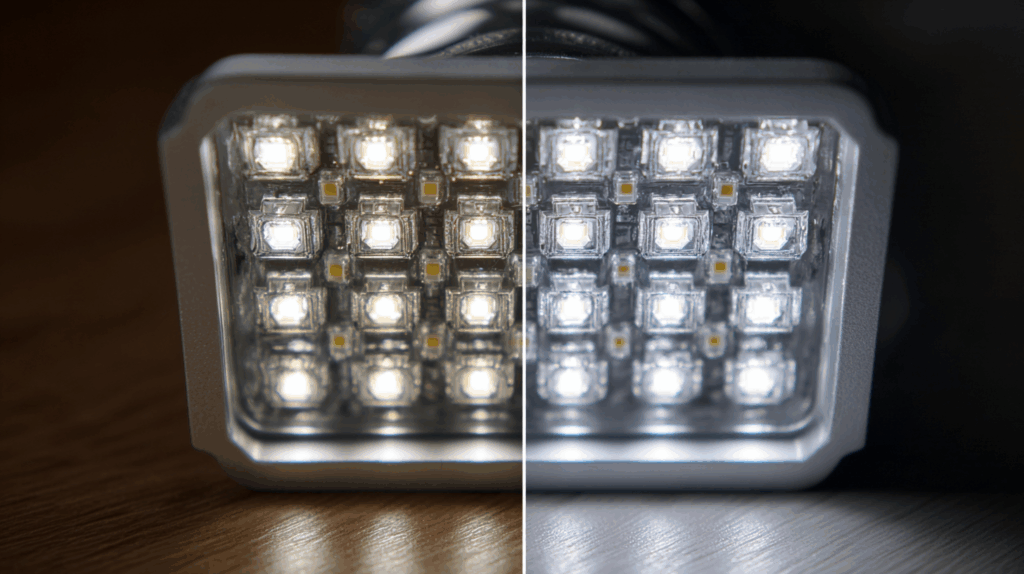
Not every LED lamp meets the same standards or gives the same results. We find big differences in color, brightness, and lifespan between brands and models. Different brands are binned at different quantities similar to computer chips. A high-quality LED chip can last around 50,000 hours—much longer than an incandescent light bulb or compact fluorescent lamp.
Some LEDs save more energy by turning about 90% of what they use into light instead of heat.
LED lighting also offers many choices for color temperature, from warm white to cool options, which helps set different moods in each room. The Color Rendering Index (CRI) shows how well a LED shows true colors; most fall between 75 and 85 CRI.
Proper installation and regular cleaning keep our modern LEDs working their best for home interiors or accent lighting setups. Making smart picks with our lighting products leads to better results and lower electric bills over time.
Differences in color and performance
Many myths about lighting design come from the idea that all LED bulbs are the same. This is far from true. We see many differences in color and performance between brands and models.
LEDs offer a wide range of color temperatures, starting at warm white near 2700K, moving up to cool white over 5000K. Warm colors feel cozy, making them great for bedrooms or living rooms; cooler whites suit kitchens or offices because they help us focus on tasks.
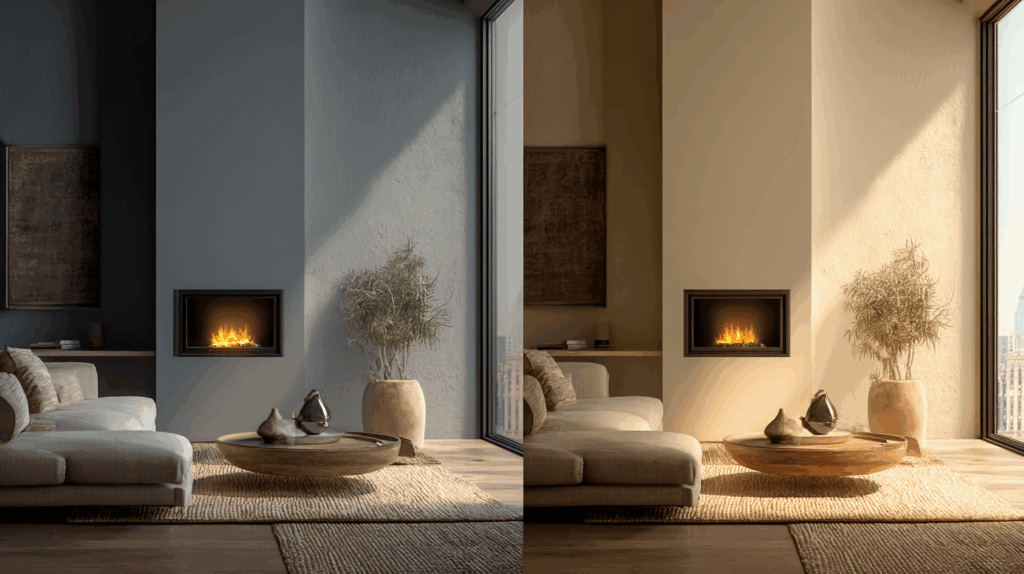
Choosing the right type of lighting helps set the mood in any space.
Performance also sets high-quality LEDs apart from lower-grade ones. Modern LED lamps last much longer than old incandescent bulbs—up to 25,000 to 50,000 hours compared with only about 750–1,200 hours for incandescents or close to 10,000 for compact fluorescent lights (CFLs).
Energy-efficient options convert almost ninety percent of electricity into light instead of heat, meaning less wasted energy and lower bills each month. High-performance LEDs give us a Color Rendering Index (CRI) above eighty; this makes colors look bright and more realistic under artificial lighting conditions.
Some fixtures work best with specific dimmers or controls too; using compatible products boosts both lifespan and overall efficiency within our lighting scheme.
Myth: One Light Type Fits All
Relying on a single light source leaves rooms flat and dull. We need a mix of ambient, task, and accent lighting for the best results. Overhead fixtures alone cannot meet every need or mood in interior design.
Task lighting helps us see while cooking or reading, while accent lights draw attention to art or furniture.
Different lighting technologies matter too. LEDs, florescents, and edison LED bulbs offer unique benefits for each area of a home or office. Smart LED fixtures save energy yet come in many colors and styles fit for specific uses.
Importance of layered lighting
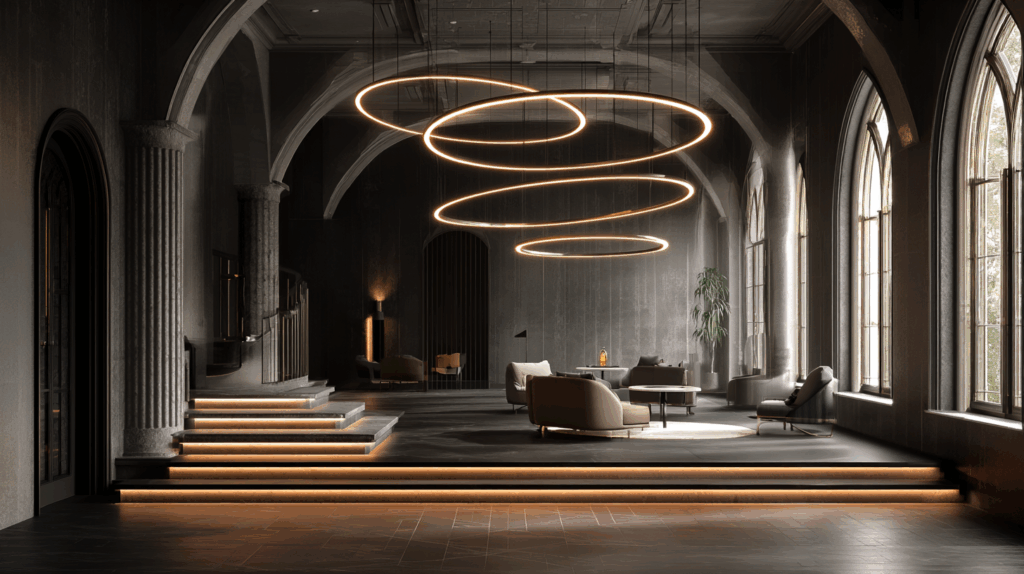
Many people think a single overhead chandelier or recessed light will do the job, but this is one of the most common misconceptions about lighting. A room with only one light source often feels harsh, flat, and uneven.
Layered lighting fixes this by mixing different types of lights—like ambient ceiling lights for general brightness, task lamps for work areas or reading, and accent sconces to highlight art or décor.
This approach helps balance shadows and makes our rooms more comfortable and useful.
We also get more control over mood and energy efficiency with layered systems. Smart controls such as dimmers, sensors, and zoning let us adjust each layer based on need or time of day.
Placing fixtures thoughtfully—not just in corners—brings better coverage while saving power. Using high-quality bulbs like LEDs ensures cost-effective lighting that supports both style and function in every space.
In short, layering is key to an effective lighting design that meets specific needs without driving up carbon output or energy costs.
Myth: Natural Light Is Always Best
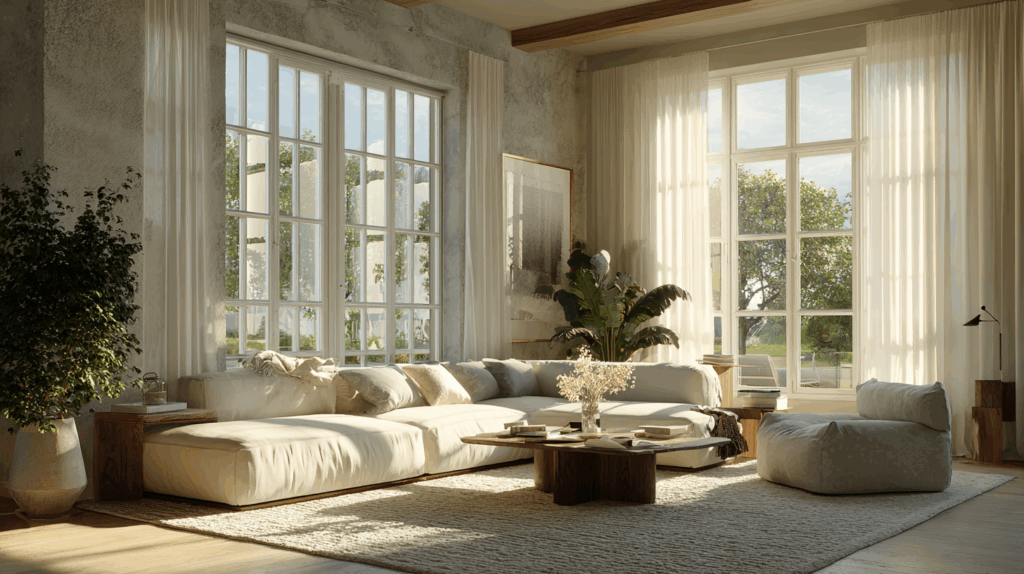
Layered lighting helps us control the mood and function of a room. The next point is about natural light, which many people see as the perfect answer for any space. Yet, relying only on daylighting does not always give us the best results.
Building orientation plays a huge role in how much sunlight we get each day. Trees and tall buildings can block windows too, leaving spots that need more than just sunshine.
Artificial lighting fills in those gaps where sunlight falls short during cloudy days or late evenings. Good electric light fixtures help us keep our spaces bright and safe at all times without wasting energy.
Using smart lighting with energy-efficient LEDs allows better control over brightness, color temperature, and even overall consumption (economics). Having both natural and electric choices lets us pick the most comfortable setting for any task or time of day while lowering our energy use year-round.
Mixing both types creates high-quality lighting environments suited to every need—at home or work—rather than depending on one source for mood or productivity.
Balancing daylight with artificial light
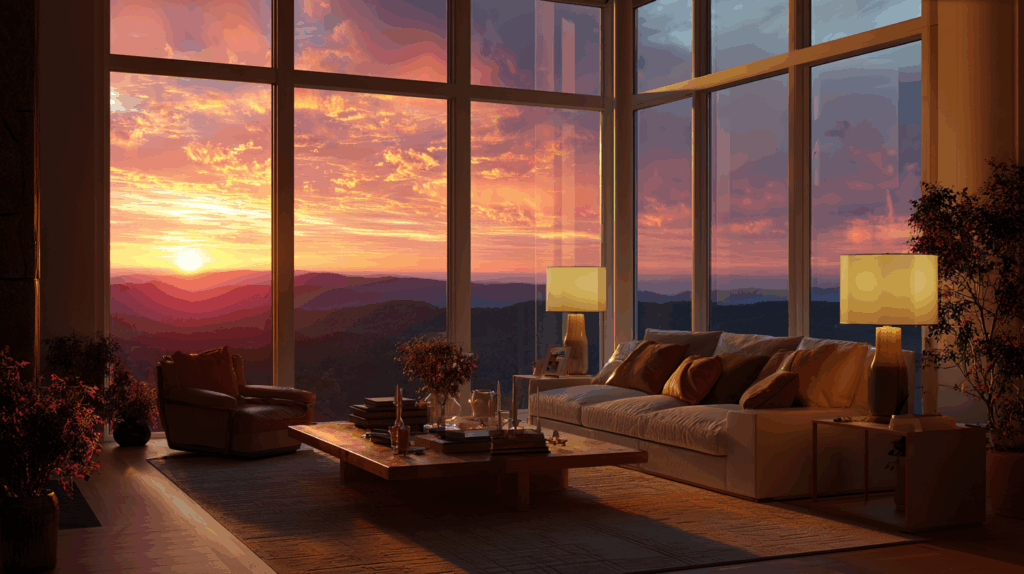
Natural light changes all day. It depends on window size, room position, weather, and the season. These shifts can cause rooms to feel too dark or bright at the wrong times. We often add artificial lighting so we have steady light for comfort and function.
Mixing natural light with artificial lights gives us more control over mood and atmosphere in any space. For example, smart lighting control systems let us adjust brightness through sensors that react to sunlight coming in windows.
This helps keep spaces comfortable during cloudy days or late evenings without wasting power. With careful planning and placement of both types of lighting, we achieve efficient energy use and consistent results across changing conditions year-round.
FAQs
Are LED lighting myths true about high initial cost and poor light quality?
Many claim that LED lights cost too much at first or give off harsh, cold light. In reality, the initial price of LEDs has dropped over time. Modern LEDs offer warm white light, giving comfortable lighting for any space.
Is it a myth that halogen lamps are more effective than LEDs for mood and comfort?
This is one of the common misconceptions in the design industry. Light-emitting diode options can create both functional and comfortable environments while using less power than halogen lamps.
Do all professional designers ignore daylighting when selecting modern lighting options?
Good designers know the importance of Daylighting (architecture) in architecture; they integrate both sunlight and electric fixtures like sconces to achieve perfect lighting throughout a building or landscape.
I have been the project manager for Modern.Place since early 2016, spending three of those years working overseas on the manufacturing & procurement side of the LED lighting industry. Constantly learning and passing on knowledge to others while excited for what the lighting industry will involve into next.

